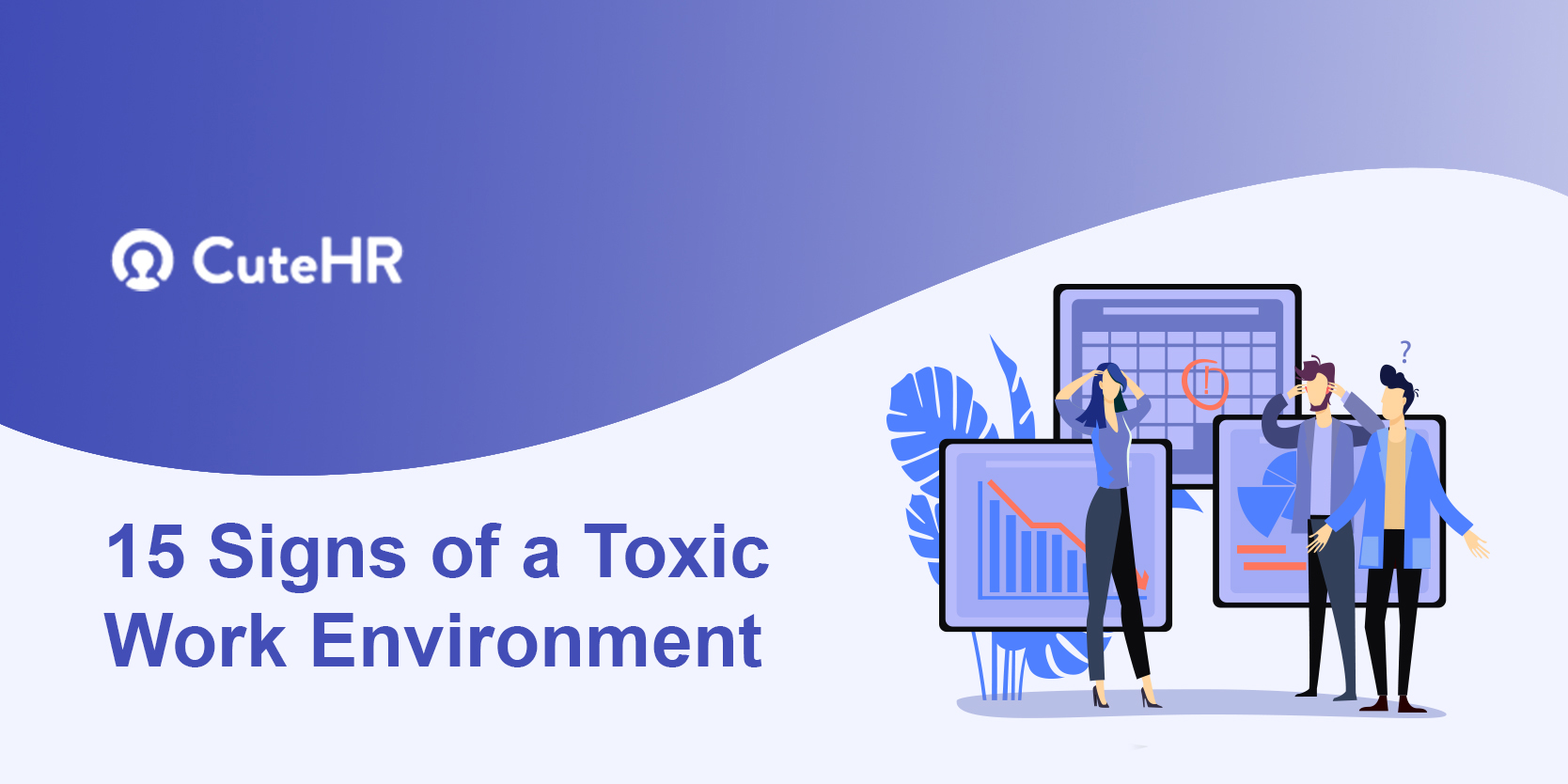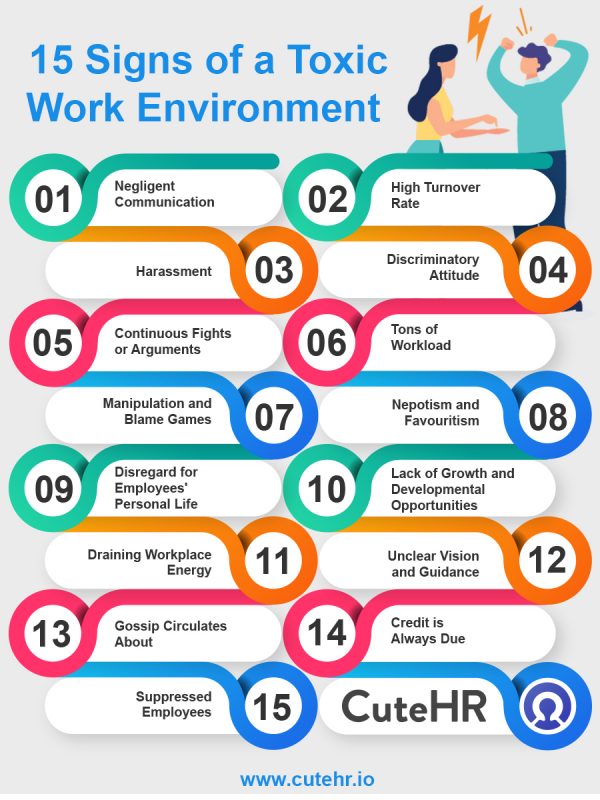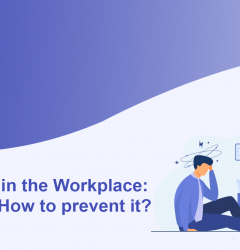23 Aug

The work environment is the premier defining facet of an organization. This environment holds all the formal and informal communication that circulates among the workforce. Moreover, the work environment shapes a company’s culture and all the attached value systems. However, with a dynamic workforce, the work environment is continually changing and active. This fluidity of the work culture is what makes it vulnerable to toxicity. It has become even more difficult to sustain a fluid work culture with technological advancements like social media.
Organizations and their management are striving to scan any level of toxicity persisting within their work culture. But it becomes mandatory for the employees as well, to take a quick scan of the atmosphere in which they are working at regular intervals. The repercussions of a toxic work environment are bad news – both for the organization and its employees. The human resources department and team managers must adroitly take imperative actions in order to create a conducive work environment. Through this article we try to understand the severity of a toxic work environment, it’s associated implications, and indications.
Table of Contents
What is a Toxic Work Environment?
A work environment that is perceived as easily harmful to the mental or physical well being of its employees is labeled as “toxic”. The presence of a toxic work environment is demarcated through a lot of signs. The HR professional and people managers have to necessarily safeguard its work premises from a toxic attack by numerous agents. Many times the presence of such toxicity is quite visible. Other times it operates slyly. There are copious ways in which toxicity at workplaces manifests itself.
As per numbers given by the infographic of SHRM July 2019 Omnibus, somewhere
Every worker is somewhat acquainted with the downside of working in a malignant work culture. In the presence of a toxic workplace culture, there is
- constant stress,
- regular fights,
- overburden,
- abuse (both mental or physical),
- strained relationships among many other less common factors.
Low turnover rate, high profit, satisfied employees, regular growth, and supportive work culture are testimonials to a well functioning organization. The core element that is detrimental to the achievement of all these milestones is the presence of a healthy work environment. Neither the employees nor can an organization turn a blind eye to its work environment. Everyone is woven as a unit of this environment and is affected both positively or negatively depending upon its quality.
The unsatisfactory or seriously declining standards of a company’s work environment force it’s employees to switch jobs.
A research conducted by SHRM, titled The High Cost of a Toxic Workplace Culture surveyed the American workforce. It shows that
The toxic work environment has become the leading cause of high turnover rates. The same SHRM research states,
“Over the past five years, the cost of turnover due to workplace culture exceeded $223 Billion.”
The numbers are staggering and call for immediate attention. SHRM President and CEO Johnny C. Taylor expresses his deep concern on the gravity of this matter,
“Billions of wasted dollars. Millions of miserable people. It’s not a warzone-it’s the state of the American workplace. Toxicity itself isn’t new. But now that we know the high costs and how managers can make workplaces better, there’s no excuse for inaction.”
It can be inferred from this that handling the work environment becomes the sole responsibility of the manager and HR professionals. Any levels of toxicity at work call for immediate actions. But primarily every employee or manager must lookout for these signs of a toxic work environment.

Signs of a Toxic Work Environment
It can be very obvious along with discreet signs that you may be working in a toxic work environment. We have tried to gloss over the slightest element that can manifest as ‘toxic’.
1. Negligent Communication

A toxic work environment has bare minimum communication. If you find your co-workers rarely talking among themselves or suddenly workload is sulking everyone deeper into their assigned cubes, the work culture is becoming stressful and toxic. The biggest red flag of a toxic work environment is the breakdown of communication.
What makes a fully functional organizational culture is trust, transparency, and communication. Once this gets tampered with, there are misunderstandings and other downsides to it. Managers must initiate and encourage communication from their end. This will provide motivation to the people to speak their minds and put across their thoughts.
“A breakdown in communication is perhaps the most common sign of a toxic atmosphere at work.”
– The High Cost of A Toxic Workplace Culture, SHRM.
2. High Turnover Rate
The most common and troublesome sign of a toxic work environment is a high turnover rate. People generally switch jobs due to a toxic work culture. Other times it is ongoing issues with the manager that causes them to quit. The cost that a company has to bear in such a case is huge as can be seen above. Additionally, it reflects poorly on an organization’s goodwill and standing in the corporate or business sphere.
3. Harassment
While other forms of toxicity at a workplace may function undercovers and unnoticed, harassment and abuse is the biggest sign of workplace toxicity. If you as an employee experience sexual or mental harassment, firstly you must immediately report it. Secondly quit the organization without sleeping upon it.
“Toxicity is rampant in the workplace and often manifests itself as sexual harassment and discriminatory treatment.”
The High Cost of A Toxic Workplace Culture, SHRM.
4. Discriminatory Attitude

One of the many detectable toxicities of a workplace after harassment is discrimination. This discriminatory attitude can manifest itself in various ways. There can be gender discrimination, age discrimination, racial discrimination, among others. Gender discrimination can be spotted if there is groupism among men at your office or if the decison making positions rests with the men solely. Also prevalent gender discrimination against women at workplaces manifests in the form of negligence towards their achievements or promotion and the assignment of petty jobs, much lower than their capabilities.
Studies by SHRM January 2019 Omnibus has recorded age discrimination to be rampant roughly among 26% of workers, aged 65-74 years.
5. Continuous Fights or Arguments
Be it a workplace or elsewhere, the very visible sign of prevalent toxicity is frequent fights or arguments. Disapprovals or disagreements are a common occurrence at a workplace. But this can immediately take a ugly turn if they go unchecked. In a workplace, the urgency to resolve fights is heightened with the possibility of many number of people who can get involved.
An organizational culture that allows fights or heated arguments is not healthy for the mental well-being of its employees. As an employee, you must necessarily report a fight, for it may negatively influence your productivity levels too.
6. Tons of Workload

Another commonly noticed sign of a stressful work environment is burdening employees with piles of work. This is toxic as it shows no regard for a worker’s saturation levels or capacity. The primary responsibility of the HR managers is to look out for signs of drowning employees in a pool of work. It is exploitation that most people fall victim to. Additionally, it creates stress. This stress due to workload or many other reasons is the cause that 57% of employees leave work feeling exhausted and drained, as stated by SHRM July 2019 Omnibus. This research also gives intel on the effects of work stress on the personal lives of employees. 28% of employees suffer from work-related stress interrupting their personal life.
7. Manipulation and Blame Games
Any kind of negativity can be easily associated and equally contributive to toxic work culture. Along with fights, company or internal politics is a serious matter of concern for the HR professionals. They must be aware of any politics or manipulation doing rounds. As for the employees, they must make informed, and smart decisions in order to avoid any criticism. However, if your work culture itself is woven around manipulative treatment from top to bottom, then you have fallen prey to toxic work culture. For instance, if superiors are able to manipulate juniors to take on extra work off of their hands, it is simply bullying and abuse of power. This hints towards toxicity.

8. Nepotism and Favoritism
Picking out favorites or appointing close friends or family in significant positions without considering hard-work pitched-in by other people shows biasness. This biased behavior is not motivational for the employees at all. Instead, it makes them believe that making progress won’t allow them to succeed if they don’t lick the boots.
As an employee you must take note of such a practice and figure out a platform to formally address it.
9. Disregard for Employees’ Personal Life
The most commonly heard of a rant from an employee is the overtime he has to put in. But many organizations pay extra for pulling overtime and have strict policies related to it. However, there are other organizations that exploit its workforce by extracting extra work hours from its people. This puts their personal life at stake. The “always-on” kind of working attitude is directly signaling towards your lack of commitment to your personal life. For example, working during vacation or holidays or odd hours of the day is sheerly employee exploitation and disregard for their personal life. More than often people aren’t able to create a work-life balance due to such working patterns.
10. Lack of Growth and Developmental Opportunities
All an employee asks for is an appreciation for his work, motivation, proper guidance, and growth. A seemingly stagnant position in an organization is a toxic trait of that workplace. If you as an employee find yourself stuck doing mundane and monotonous work with no clarity or growth, it is time to rethink your role in the organization. Regular growth is the quintessential motivation for the future.
On the other hand, an organization’s toxicity level might be influencing your motivation or growth zeal. It is seen that a toxic workplace environment culminates a feeling of unwillingness and a lethargic attitude gradually develops. You must maintain social distancing from such a toxic environment.
11. Draining Workplace Energy
Any company’s work culture is composed of several different elements. But the human resources or people is what actually shapes it. The combined energy of everyone working in an office and managing it, in association with its ethics, make up the energy of a particular workplace. But in a toxic setting, this energy is filled with cynicism and gloom.
12. Unclear Vision and Guidance

The most ideal way in which an organization can function is in the presence of proper vision and guidance. This calls for expert managers who would communicate and synchronize the efforts of their team seamlessly. Vague or ambiguous instructions and guidelines will leave you stranded mid way. In such a case, it would be wise to ask for better guidelines.
But toxic work cultures do not entertain such requests as there is a lack of communication and consideration for their employees’ needs. In such a case, an employee will be baffled regarding the work to be done and won’t fetch the required outputs. The consequences of vagueness and unclear guidance in a toxic work environment can be catastrophic.
13. Gossip Circulates About
Robust work culture has healthy communication and a toxic one has unwanted gossip circulating about. Some amount of gossip at an office is very typical. But in a toxic work environment, with the insufficiency of productive communication, there is a lack of focus on work. Employees become less engaged and more interested to spread and receive gossip. The presence of such gossip-mongers as employees and co-workers is any day nonproductive and brings about negativity.
14. Credit is Always Due
A dysfunctional organization never gives due credit or recognition to outstanding work. Other times your colleagues or superiors may take credit for the work you do. Toxicity also persists when a single person carries around the weight of the entire team and does all the work.
15. Suppressed Employees
Toxicity will blatantly operate if the employees’ opinion is rarely acknowledged. What’s more condemnable is if the management fails to meet the needs of its workforce and practices suppression. An ideal organization would always pay heed to its people. If you feel unheard, unwanted, and feel overpowered by superiors or co-workers, your work environment is unequivocally toxic.
The Resolve ?
Company culture is the concrete that interlaces each department, along with its employees to one other. It predominantly plays a major role in the success of an organization. The existence of a thriving company culture sets standards of behavior or response for the workforce and the management alike. In the case of a toxic work environment, the smooth functioning of operations will be hindered, as employees will face problems due to the culture itself. This will have disastrous consequences.
Also Read: How COVID-19 can affect Workplaces & Steps Employers can take to contain it
For an Organization
The need is for the HR managers and professionals to step in and take charge. They ought to assess their work in terms of –
- culture,
- ethics and
- popular opinion of the workforce.
A two way communication is primary to erect an impeccable work environment. Managers and team leaders take the front position when battling with toxicity at workplaces. They must indulge in interaction with employees and listen to them to understand their point of view. Such kinds of practices are an outcome of total transparency.
The HR professionals must facilitate specific portals and platforms where the employees indulge to discuss their opinion on their organizational culture. One of the most successful tools for the same is the human resource management system (HRMS). Besides helping out with storage and facilitation of key employee-related information and roles, an HRMS additionally can gather workforce opinion, to track their satisfaction levels. Such information becomes crucial for the HR managers as it helps them to
- acknowledge any issues
- record and address complains
- mutually reach a quick solution.
The involvement of an HRMS is a perk, for it is a deft tool enabling this quick tracking, collection and assessment.
For an Employee
Talking strictly from an employee’s perspective, surviving in a toxic work environment becomes an arduous effort. It is mentally and physically draining and unhealthy to begin with. The problem might be surviving in a toxic work environment or dealing with toxic co-workers. As an employee –
- Firstly, look for a support system, a friend, or a guide in your workplace. Talk or vent out any negativity, abuse, or exploitation you have been dealing with.
- Secondly, make a record of all the unacceptable practices. This will serve as evidence and back your story if you want any legal aid.
- Talk it out and convey your feelings to your superiors. Make them see your side of things. Specifically, it is the human resource department responsible to deal with such issues.
- In the end, it is you who has to decide whether or not to continue with your current job. If you choose to work between toxic behaviors and policies, it will become detrimental to your professional/personal life.
Final Thought
All in all, the upliftment of the organisational culture becomes a shared responsibility of the management and it’s employees. What makes a strong workplace culture is
- consideration for the needs of workforce and
- adoption of policies that run along the company ethics.
There must be the propagation of health practices and condemnation of the noxious ones. A single cleave in any institution’s work atmosphere brought about due to its policies or negligence will give birth to unwanted toxicity.













Avneet Oberoi